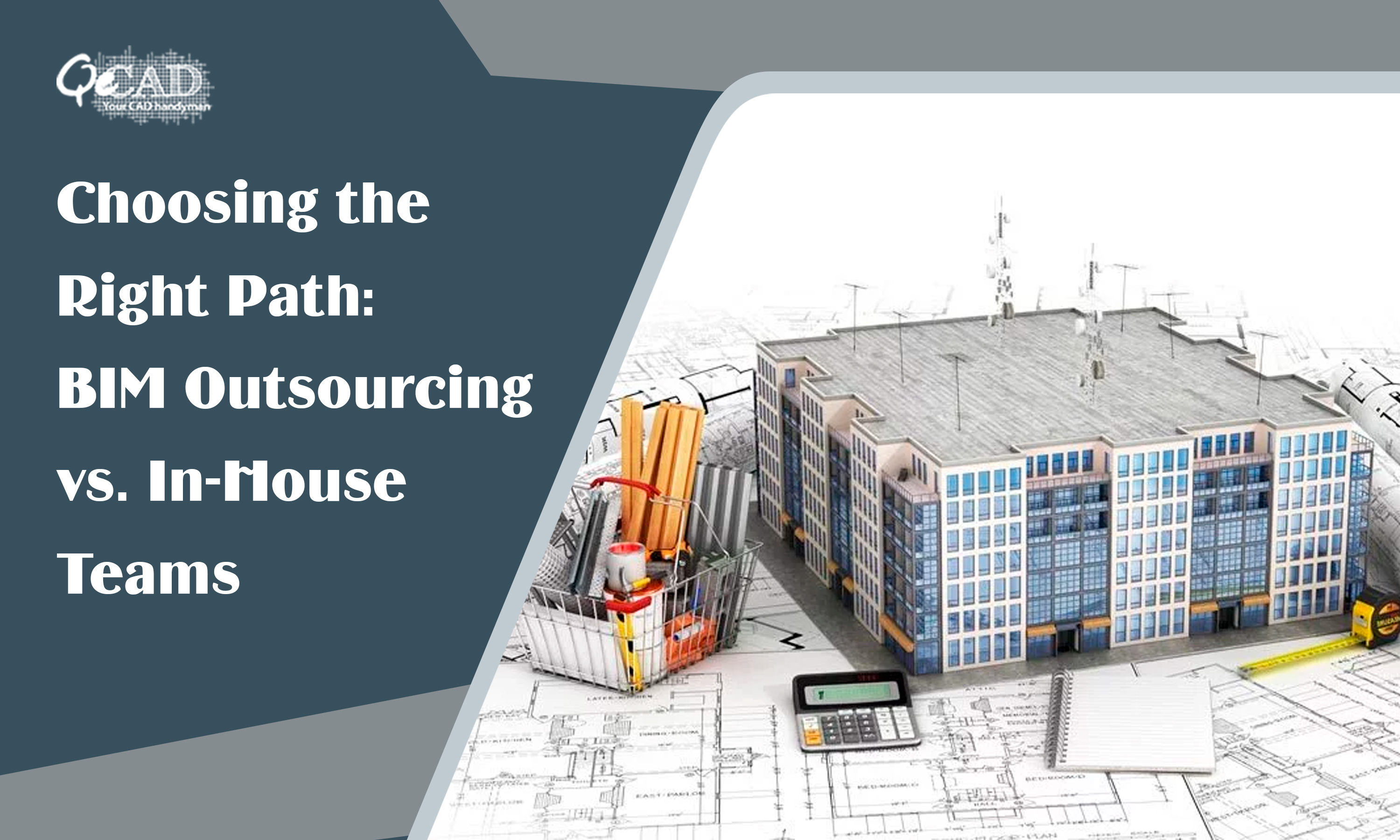
Building Information Modelling (BIM) has revolutionized the architecture, engineering, and construction (AEC) industry by providing a collaborative and data-rich approach to project management. BIM enables professionals to create 3D models, track project progress, and optimize design and construction processes. However, organizations face a critical decision when it comes to managing their BIM workflows: whether to outsource BIM Company or maintain an in-house BIM team. This decision holds substantial consequences for project efficiency, expenses, and overall outcomes. The below infographic showcases the various aspects of BIM outsourcing and in-house BIM teams to help you make the right choice for your organization.

Conclusion:
The decision between BIM outsourcing and in-house BIM teams depends on your firm’s specific needs, size, and long-term goals. Numerous organizations have discovered that a hybrid approach offers the most advantageous solution, harnessing the advantages of both alternatives. This approach allows them to maintain essential in-house capabilities while strategically outsourcing specific tasks or projects to meet their immediate needs.
There is no one-size-fits-all answer to the BIM outsourcing vs. in-house BIM team debate/dilemma. Each has its unique advantages and challenges, and the choice should be based on your organization’s objectives, project requirements, and available resources. Regardless of the chosen approach, embracing BIM technology is essential in today’s AEC industry to stay competitive, improve project outcomes, and meet the growing demands for sustainable and efficient construction processes.
